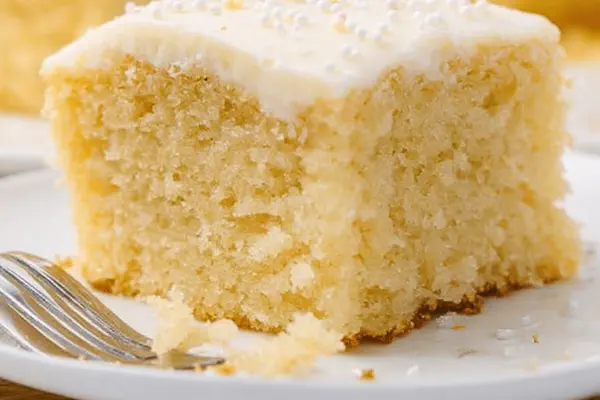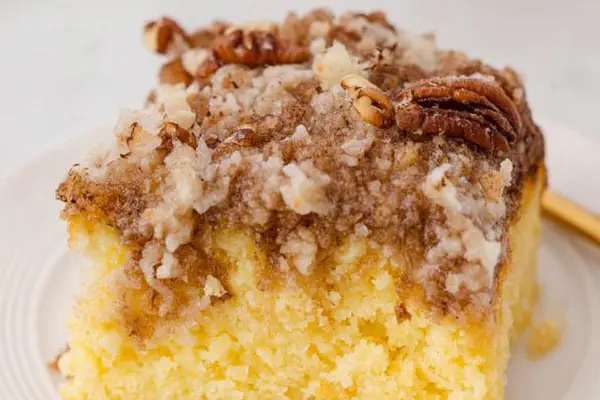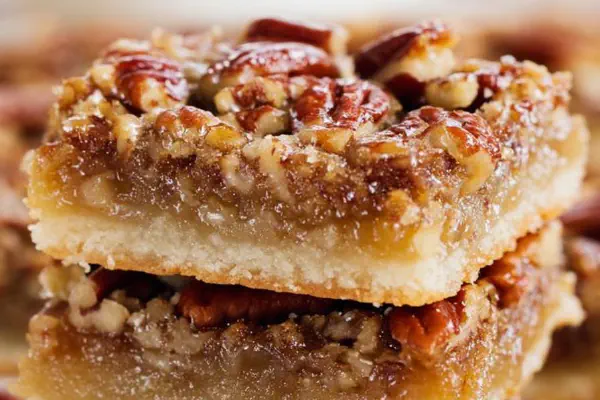Vanilla Almond Cake

By Emma
Certified Culinary Professional
Ingredients
- 1 ¾ cups cake flour
- 1 cup granulated sugar (reduce by 2 tbsp if preferred less sweet)
- 1 tbsp baking powder
- ½ tsp salt
- ½ cup vegetable oil (can swap half with melted butter for flavor)
- ½ cup milk (whole preferred, or buttermilk for tang)
- ½ cup sour cream (plain Greek yogurt for slight tang and thickness)
- 1 large egg
- 1 tsp pure vanilla extract
- ¼ tsp almond extract (optional but adds a nice note)
- nonstick spray for pan
- Frosting (optional):
- ½ cup unsalted butter, softened
- 1 tsp vanilla extract
- 1 ½ cups powdered sugar (adjust for desired sweetness and consistency)
- 2–3 tbsp milk
About the ingredients
Method
- Preheat oven to 345°F. Grease an 8x8 pan well with nonstick spray or line with parchment. The lower temp reduces cracking and encourages even rise.
- In medium bowl, whisk cake flour, sugar, baking powder, and salt thoroughly. This distributes leavening and salt evenly to avoid bitter pockets.
- In separate bowl, combine oil, milk, sour cream, egg, vanilla, and almond extract. Whisk but don’t aerate too much. You want the fat well combined without bubbles.
- Fold wet into dry gently. Do NOT overmix. Stop folding once no flour streaks remain. Batter will be thick but fluid. Overworking develops gluten, tough cake.
- Pour batter into prepared pan. Tap pan gently on counter once or twice to settle batter and release big air bubbles.
- Bake 27–32 minutes. Start checking at 27 mins with a toothpick or skewer: clean or with a few moist crumbs is done. Look for edges pulling away slightly and a springy top that bounces back.
- Remove from oven. Let cool completely in pan — at least an hour. Warm cake makes frosting greasy and melts it down.
- Frosting (optional): Beat softened butter and vanilla in medium bowl on medium-high speed about 1 to 1½ minutes until creamy and light colored. Scrape bowl sides.
- Turn mixer to low; gradually add powdered sugar and 2 tablespoons milk. Increase speed to medium; mix 1½–2 minutes till fluffier but don’t overdo or it separates. Adjust milk or sugar for consistency; frosting should be thick enough to spread but soft.
- Use offset or silicone spatula to frost fully cooled cake evenly. Chill briefly to set if too soft.
- If frosting cracks or feels greasy, refrigerate 10 minutes. Let come closer to room temp before serving for best texture.
- Substitutions: Use equal whole wheat pastry flour for a nuttier flavor but expect denser crumb. Swap sour cream for plain full-fat Greek yogurt if needed to maintain moisture and tang.
- If no almond extract, skip or add a drop more vanilla. Overuse almond can taste bitter or medicinal.
- Troubleshooting: Too dense? Check baking powder freshness and don’t overmix. Underbaked? Increase oven time by 3–5 minutes but watch carefully to avoid drying. Cake should feel light and bounce back when gently pressed.
- Storing cake in airtight container at room temp keeps moist 2–3 days. Frosted cake refrigerate and bring to room temp before eating.
Cooking tips
Chef's notes
- 💡 Fold wet into dry with gentle strokes; no whipping or beating. Look for no flour streaks but don't drag long. Batter thick but still fluid. Overmix means tough texture; gluten forms fast here.
- 💡 Bake at slightly lower temp than usual. Watch edges pull back a bit from pan and springy top that bounces back when touched. Toothpick in center still best judge—clean or few moist crumbs.
- 💡 Replace sour cream with full-fat plain Greek yogurt for tang and moisture. Swap half vegetable oil with melted butter for richer flavor, but keep batter warm to prevent curdling.
- 💡 Tap batter-filled pan lightly against counter once or twice to release large air bubbles. Avoid shaking or heavy tapping; large bubbles cause holes or cracks while small trapped air helps rise.
- 💡 Frosting needs butter softened not melted. Beat butter and vanilla low speed until creamy and light colored, scrape sides often. Add sugar gradually with low milk amount; speed up later for fluffiness. Avoid quick sugar dump or it gets gritty.
Common questions
Why fold batter gently?
Folding keeps gluten low. Mix too fast or long and cake toughens. Folding stops flour from turning gluey; batter still thick but no streaks. Aim for softness, no bubbles.
Can I swap sour cream?
Yes, plain full-fat Greek yogurt works well. Same moisture, adds protein, slight tang. Yogurt a bit thicker; adjust liquid if needed. Also keeps crumb tender, avoid low-fat options.
What if cake dense?
Check baking powder freshness; stale means poor rise. Overmixing too. Watch folding steps carefully. Oven temp can be too low or too high. Rise depends on consistent heat and gentle handling.
How store cake?
Airtight container room temp is fine 2 to 3 days. Frosted cake better refrigerated; bring to room temp before serving. Wrap well; condensation ruins crust or makes frosting greasy.



